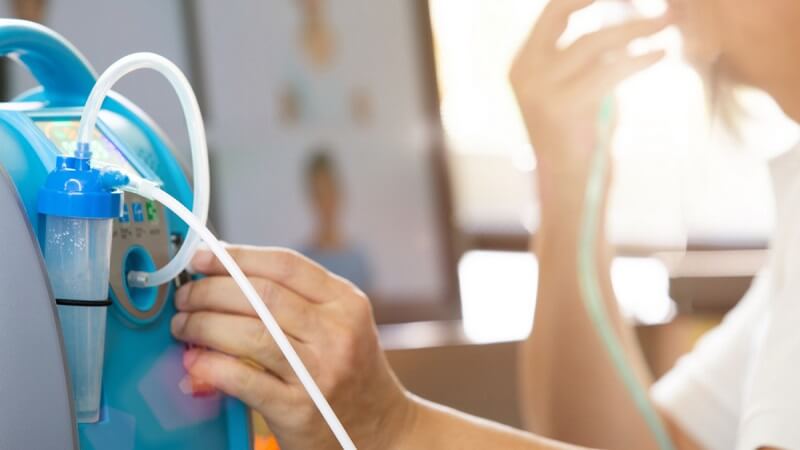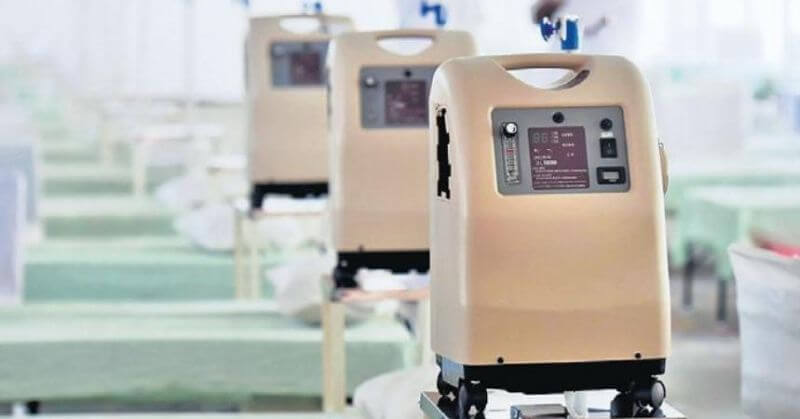The demand for oxygen has only risen as the number of serious COVID-19 patients in the country has increased. A large number of people are gasping for air and queuing outside hospitals. A significant number of infected people are being treated at home with oxygen concentrators and other forms of oxygen. But what exactly is an oxygen concentrator? How does it function? All you need to know is right here.
COVID-19 is a disease that affects the lungs. It not only infects the respiratory tract but also has a significant impact on oxygen saturation levels in extreme COVID patients.
What Is An Oxygen Concentrator?

Oxygen concentrators and cylinders are extremely useful in COVID patients due to oxygen depletion and rising lung infections. The air we breathe contains approximately 78% nitrogen and 21% oxygen, with the remaining 1% made up of other gases.
Oxygen concentrators are machines that remove nitrogen from the air and provide pure oxygen to people whose blood oxygen levels (SpO2) fall below 93 percent. The ideal oxygen level is between 94 and 99 percent. On the market, there are two types of oxygen concentrators: continuous flow and pulse dose.
A continuous flow oxygen concentrator delivers the same flow of oxygen per minute before it is switched off, while a pulse dose oxygen concentrator recognizes the patient’s breathing pattern and releases oxygen when inhalation is detected.
For Whom Should It Be Used And When?

Oxygen therapy can be used for a variety of purposes, including COVID-19 complications. Dr. Randeep Guleria, Chief, AIIMS New Delhi, recently issued an alert to COVID-19 patients about taking certain precautions while using external oxygen. According to him, there is no need to take high oxygen just to keep the saturation at 92 or 94 percent, as it will not help. There is no need to take oxygen if the saturation is above 95. If it’s less than 94, there is a need to be closely monitored, but oxygen might not be required if the patient is safe.
People whose blood oxygen levels fall below 93 percent should start setting up oxygen concentrators for themselves and begin therapy at home. It’s important to remember, however, that only patients with mild or moderate symptoms and an oxygen saturation level of 90-94 should depend on an oxygen concentrator and be able to use it at home. Anyone with a SpO2 level below 80-85 can need a higher oxygen flow or may be forced to use an oxygen level.
Difference Between Oxygen Concentrators And Oxygen Cylinders

Oxygen concentrators are a more convenient and compact alternative to bulky oxygen cylinders. However, they can only provide 5-10 liters of oxygen per minute, which may not be enough for patients in critical condition. Only people suffering from mild to severe symptoms should use oxygen concentrators.
However, oxygen concentrators can be quickly transported from one location to another and do not require constant refilling. It just needs a power source to pull in ambient air.
Things To Remember Before Buying An Oxygen Concentrator

Oxygen concentrators take in ambient air and purify it of nitrogen and other gases. It delivers pure oxygen to patients who are deficient in oxygen. However, oxygen concentrators need a constant power supply ranging from 100 to 600 watts. It dispenses oxygen until and until it is manually turned off, unlike oxygen cylinders. According to studies, 1 liter of oxygen will increase a patient’s lung capacity by 24 percent, 2 liters by 28 percent, and so on. It can, however, be controlled as required.
During this pandemic, it is important to take precautions against coronavirus. Maintain social distancing, wear masks, use sanitizers, and wash hands regularly.
Follow Us: Facebook | Instagram | Twitter |
Entertales is on YouTube; click here to subscribe for the latest videos and updates.














